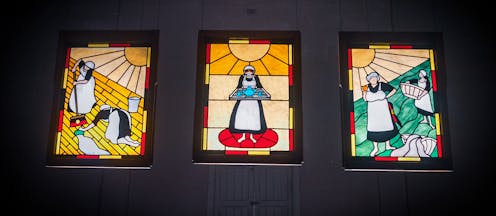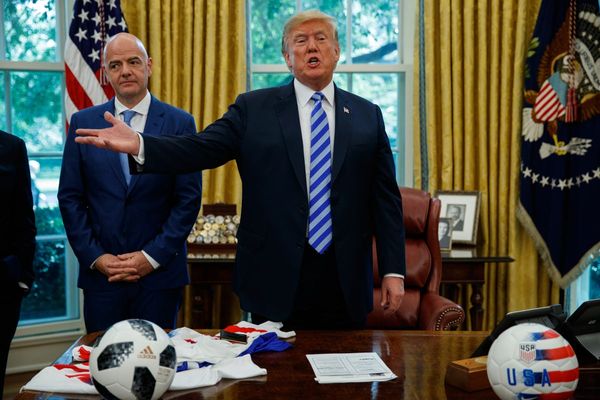
Despite the unsettling advancement of weapons technology in the 21st century, storytelling remains a powerful force for promoting conflict resolution and peace. First Nations poetry of peace is a continuation of millennia-old Indigenous practices to maintain or restore balance in our worlds through storytelling.
After the failure of the October referendum to enshrine a First Nations Voice in the constitution, there has largely been silence about alternative roadmaps to peace in Australia. Yet, even in this silence, we can still hear the extraordinary voices of Aboriginal and Torres Strait Islander people calling for peace in their storytelling. Might we then re-envision First Nations poetry as a work of makarrata?

Reading Gunnai poet Kirli Saunders’ stunning new collection, Returning, we learn about healing and finding peace within our own spirits.
Reading Narungga poet Natalie Harkin’s quietly powerful Archival-Poetics, we learn about truth-telling and how archival records about Aboriginal women in domestic service can be reclaimed in storytelling by their living descendants.
And reading Mununjali Yugambeh poet Ellen van Neerven’s fierce Throat, we learn about imagining more just futures for our nation.
Their words are healing the self as well as unreconciled relationships and unreconciled narratives of the past. In dark spaces of inhumanity and despair, they shine the light of humanity and hope.
These three poets sit alongside countless Aboriginal and Torres Strait Islander poets past, present and emerging, such as Noongar poet Graeme Dixon, Yamaji poet Charmaine Papertalk-Green and Barkindji poet Nancy Murray.
In times of conflict, we need stories more than ever.
kingdoms rise and fall
on the tip of a tongue
(excerpt from Kingdoms from Refugia by Elfie Shiosaki)
Makarrata
In some ways, the failure of the Voice referendum represented the failure of a peace process that began in 2015 with the First Nations regional dialogues – the largest First Nations consultation process in Australian history.
The 2017 Uluru Statement from the Heart’s proposed reforms, such as this First Nations Voice, were a roadmap to peace. As the statement asserts, “makarrata is the culmination of our agenda: the coming together after a struggle”.
Makarrata is a Yolgnu language word for peacemaking. To practise makarrata is to seek a full understanding of a conflict and, after this understanding has been reached, to seek a settlement. Similar peace processes have been held in countries such as Canada, New Zealand and South Africa.
The failure of the referendum did not silence First Nations people’s call for peace nor their agency to build movement and momentum towards peace processes.
she tells me
rage’s underbelly
is grief
(excerpt from Wallflowers and Evergreens from Returning by Kirli Saunders)
Digging deep in the archive
Institutions do not hold absolute power and control over peacemaking. Peace is as much about the wellbeing of individuals and communities as it is about state security. First Nations creative communities are creating spaces to heal from historical and contemporary violent conflict.
These spaces empower individuals to speak truth to power and share their lived experience of conflict. They seek justice in ways that transcend the bounds of traditional justice mechanisms, in particular by reaching and engaging the broader community and evoking a collective responsibility for conflict resolution.
Reflecting on the Canadian Truth and Reconciliation Commission between 2007 and 2015, Commissioner Marie Wilson stated:
You will need to create opportunities for people to get their heads around what happened in a very real way; to help move them on the journey between head and heart.
Poetry is a vessel that holds the emotions of a story.
dig deep in the archive, bear witness to the horror and all our grandmothers had to navigate, find answers cruel enough to stop the blood.
(excerpt from Memory Lesson 8/Grandmother Impressions from Archival-Poetics by Natalie Harkin)

By reading First Nations poetry, we come to feel, rather than know, Aboriginal and Torres Strait Islander people’s truths and lived experiences.
We learn, for example, about policies and practices of the Stolen Generation and estimates of the number of Aboriginal and Torres Strait Islander children forcibly removed from their families, but First Nations storytelling, in its deep generosity, teaches us what it feels like to have a child taken from your arms.
This is a relational process, in which listening is equally important to speaking, generating compassion in the true sense of the word – to stand together in suffering.
It is a process that moves us beyond truth-telling to making peace between individuals and communities, a practice of nation-building that confronts a painful past and embraces possibilities of new beginnings.
Elfie Shiosaki does not work for, consult, own shares in or receive funding from any company or organisation that would benefit from this article, and has disclosed no relevant affiliations beyond their academic appointment.
This article was originally published on The Conversation. Read the original article.







